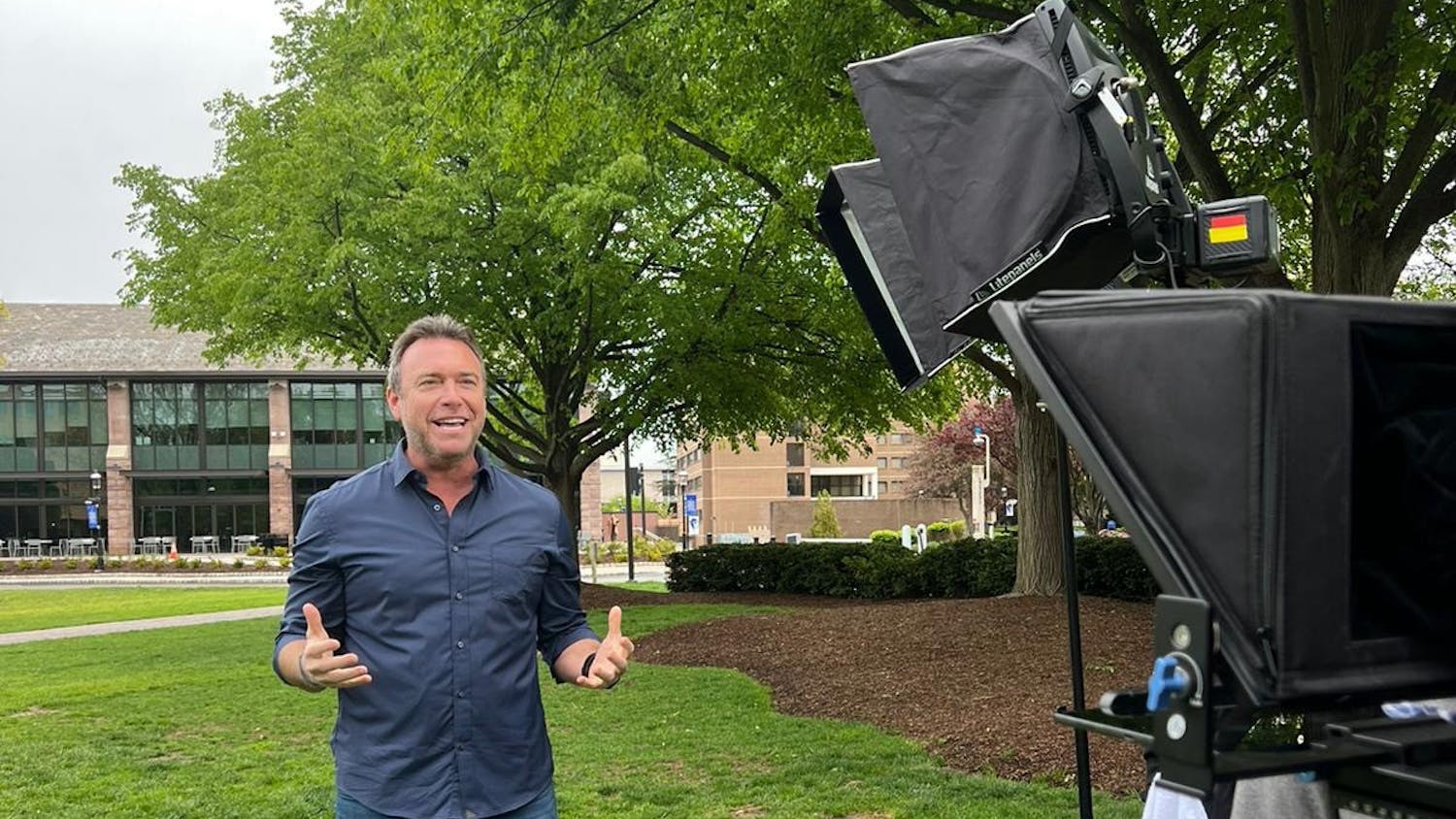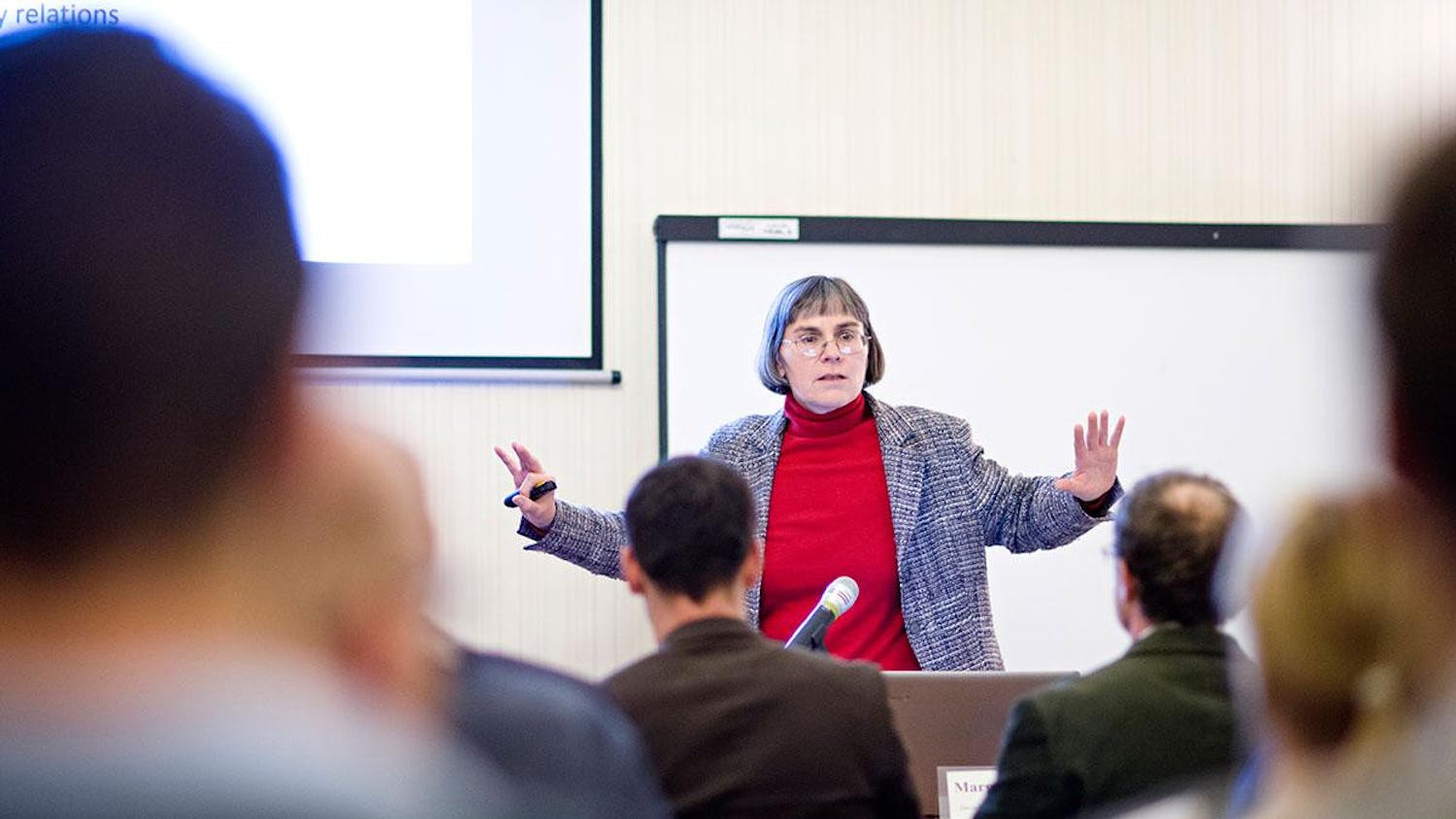[caption id="" align="alignnone" width="361"] shu.edu[/caption]
As the College of Communication and the Arts continues embarking on its inaugural year, the faculty within the new school are working behind the scenes to create a new curriculum. Heading the efforts to revamp the school’s educational offerings is Interim Director of Curriculum and New College Initiatives, Thomas Rondinella.
When searching for new courses to add to the school, Rondinella looks for new concepts which can complement each major.
“We’re always looking for anything that can be interactive with other majors. We make sure our courses have a lot of connectivity with each other. On the professional side, we look for cutting edge ideas and industry trends. On the academic side, we look to broaden the scope of courses we will be offering,” he said.
With the evolving core requirements and constant addition of new courses, Rondinella believes students must take advantage of the guidance of faculty advisors within their major.
“A lot of students rely on upperclassmen for advice when it comes to classes they should take, but they shouldn’t because their curriculum is different. Things are changing so quickly that there are seniors taking different courses than sophomores to satisfy their requirements,” he added.
“It is very important that students are advised by someone in their major. With all the new courses being developed, the interactive nature of our college, and classes substituting in other parts of the curriculum, only an advisor would be able to correctly guide students on the most successful path.”
Students can join the new courses being offered during the upcoming summer semester.
William Pace, professor of digital media production, has created the course “Philmmaking 101” to add to the college’s roster of courses offered. The creative spelling derives from the course’s unique curriculum.
Pace said the reason for the unusual spelling is because it’s a course centered on an unusual concept that it will outline the basics of cinematography using your camera phone and the concept is one that people are already familiar with and use on a daily basis.
“Usually when they come into our classes with professional level cameras, it is difficult for them to learn right away. In the classroom, they learn the essence of good cinematography and videography with this high tech camera but don’t put any of it to use in their daily lives,” Pace said. “We decided to take a piece of equipment they know and are familiar with and teach them the essentials of how to shoot good video. Once they learn that, it will help them naturally progress to working with a high tech camera and various rules for good shooting.”
The aspect of having their camera in their pocket at all times makes this course one of a kind.
“Hopefully, with the familiarity of their personal device the students will learn faster. Students will get the opportunity to take great photos and videos and raise the level of their camera abilities. Even if they don’t take any other course, or go further with photography and videography, everything they shoot will look and be more professional,” Pace added.
Pace already has interest from students and another professor, and is excited for his course to begin this summer and eventually graduate into a permanent offering every semester.
Another new class coming to the college this fall is “Songwriting and Music Fundamentals” (MUTH 1099), taught by Dag Gabrielsen, professor of sound engineering and production.
A course of Gabrielsen’s own creation, he said, “all levels and styles of music are welcome in the course, from beginner through advanced. We will cover various approaches to text setting which is a term we use to describe the art of setting words to music when writing a song. We will also cover how the elements of music are balanced in the creation of songs.”
Gabrielsen added that the course also includes hands-on training in Sibelius music notation software and Pro Tools on Mac workstations in the Music Technology Lab. He said in a workshop environment like this, students learn music fundamentals through hands-on song creation.
Gabrielsen, like Pace and Rondinella, is geared towards bringing the new and improved courses to the students of the College of Communication and the Arts. He created this course after assessing the interest of his students, both music major and non-majors alike.
“I had my students fill out an informal questionnaire to get a sense of their interests and needs with regards to our current curriculum. Learning how to write songs, at least at the introductory level, was at the top of their list, along with basic training in sound production and engineering,” Gabrielsen said.
“I proposed that we modify an existing introductory course in Music Fundamentals by making songwriting the focus rather than abstract exercises in music theory.”
Heather Harris can be reached at heather.harris@student.shu.edu.
shu.edu[/caption]
As the College of Communication and the Arts continues embarking on its inaugural year, the faculty within the new school are working behind the scenes to create a new curriculum. Heading the efforts to revamp the school’s educational offerings is Interim Director of Curriculum and New College Initiatives, Thomas Rondinella.
When searching for new courses to add to the school, Rondinella looks for new concepts which can complement each major.
“We’re always looking for anything that can be interactive with other majors. We make sure our courses have a lot of connectivity with each other. On the professional side, we look for cutting edge ideas and industry trends. On the academic side, we look to broaden the scope of courses we will be offering,” he said.
With the evolving core requirements and constant addition of new courses, Rondinella believes students must take advantage of the guidance of faculty advisors within their major.
“A lot of students rely on upperclassmen for advice when it comes to classes they should take, but they shouldn’t because their curriculum is different. Things are changing so quickly that there are seniors taking different courses than sophomores to satisfy their requirements,” he added.
“It is very important that students are advised by someone in their major. With all the new courses being developed, the interactive nature of our college, and classes substituting in other parts of the curriculum, only an advisor would be able to correctly guide students on the most successful path.”
Students can join the new courses being offered during the upcoming summer semester.
William Pace, professor of digital media production, has created the course “Philmmaking 101” to add to the college’s roster of courses offered. The creative spelling derives from the course’s unique curriculum.
Pace said the reason for the unusual spelling is because it’s a course centered on an unusual concept that it will outline the basics of cinematography using your camera phone and the concept is one that people are already familiar with and use on a daily basis.
“Usually when they come into our classes with professional level cameras, it is difficult for them to learn right away. In the classroom, they learn the essence of good cinematography and videography with this high tech camera but don’t put any of it to use in their daily lives,” Pace said. “We decided to take a piece of equipment they know and are familiar with and teach them the essentials of how to shoot good video. Once they learn that, it will help them naturally progress to working with a high tech camera and various rules for good shooting.”
The aspect of having their camera in their pocket at all times makes this course one of a kind.
“Hopefully, with the familiarity of their personal device the students will learn faster. Students will get the opportunity to take great photos and videos and raise the level of their camera abilities. Even if they don’t take any other course, or go further with photography and videography, everything they shoot will look and be more professional,” Pace added.
Pace already has interest from students and another professor, and is excited for his course to begin this summer and eventually graduate into a permanent offering every semester.
Another new class coming to the college this fall is “Songwriting and Music Fundamentals” (MUTH 1099), taught by Dag Gabrielsen, professor of sound engineering and production.
A course of Gabrielsen’s own creation, he said, “all levels and styles of music are welcome in the course, from beginner through advanced. We will cover various approaches to text setting which is a term we use to describe the art of setting words to music when writing a song. We will also cover how the elements of music are balanced in the creation of songs.”
Gabrielsen added that the course also includes hands-on training in Sibelius music notation software and Pro Tools on Mac workstations in the Music Technology Lab. He said in a workshop environment like this, students learn music fundamentals through hands-on song creation.
Gabrielsen, like Pace and Rondinella, is geared towards bringing the new and improved courses to the students of the College of Communication and the Arts. He created this course after assessing the interest of his students, both music major and non-majors alike.
“I had my students fill out an informal questionnaire to get a sense of their interests and needs with regards to our current curriculum. Learning how to write songs, at least at the introductory level, was at the top of their list, along with basic training in sound production and engineering,” Gabrielsen said.
“I proposed that we modify an existing introductory course in Music Fundamentals by making songwriting the focus rather than abstract exercises in music theory.”
Heather Harris can be reached at heather.harris@student.shu.edu.





